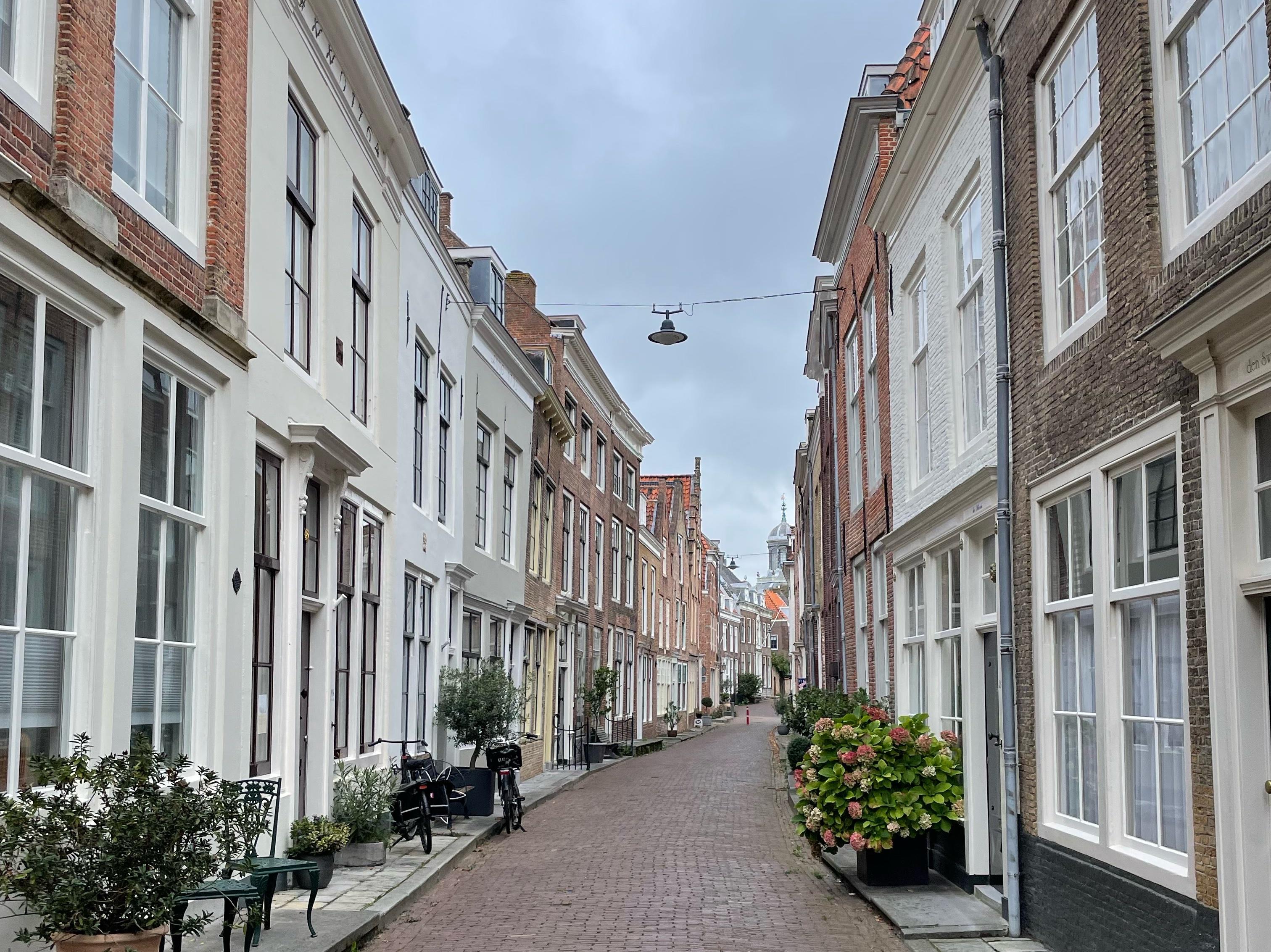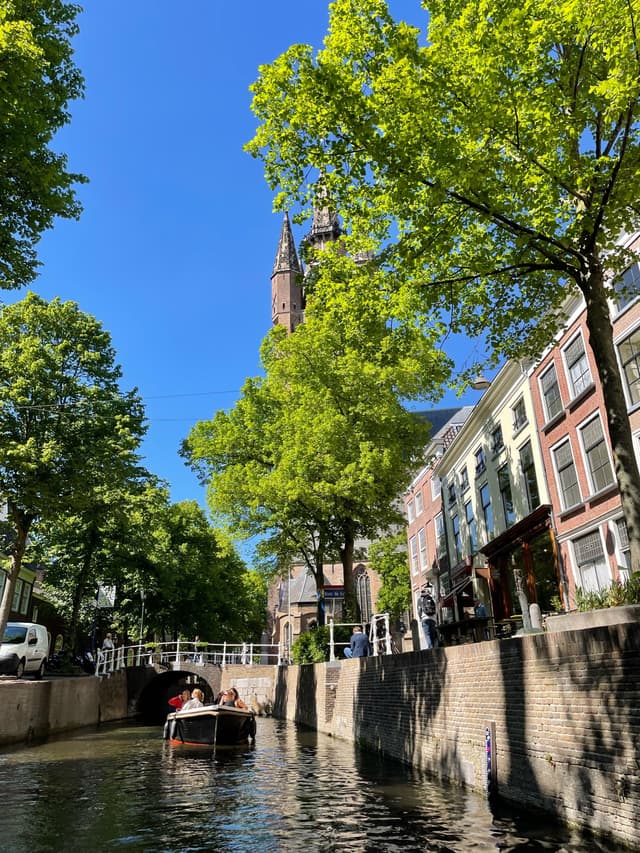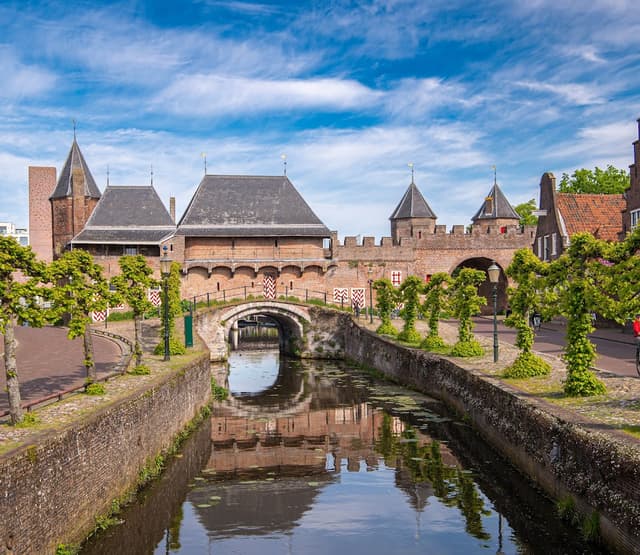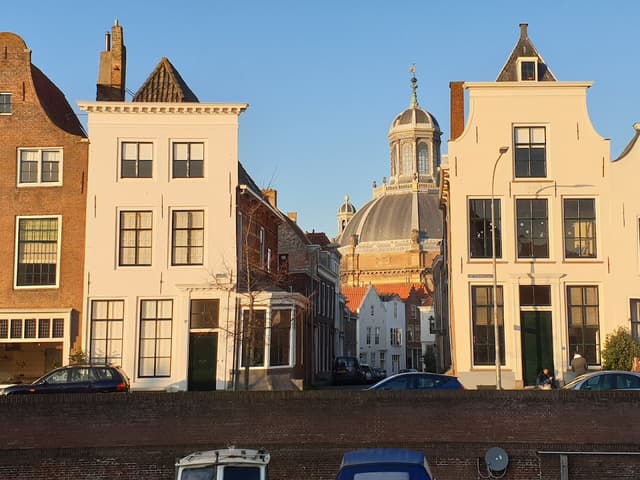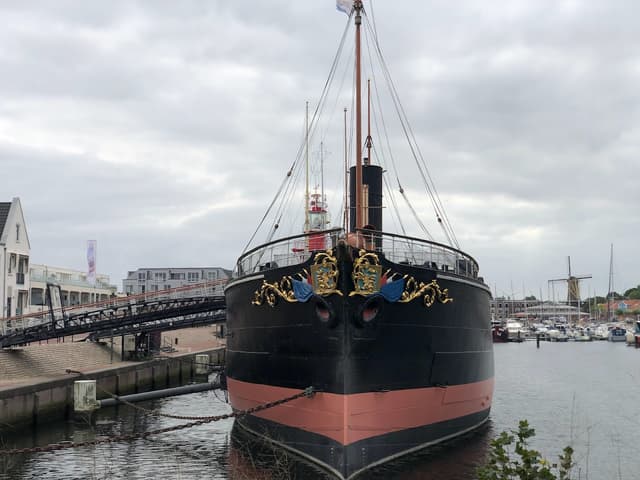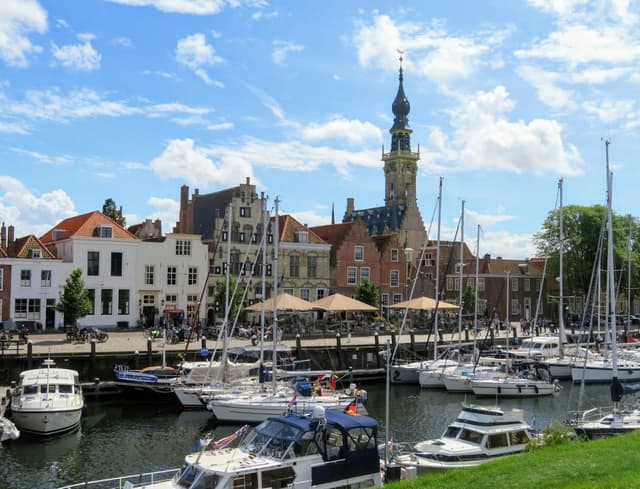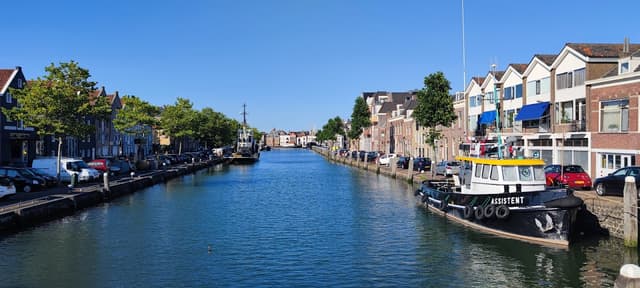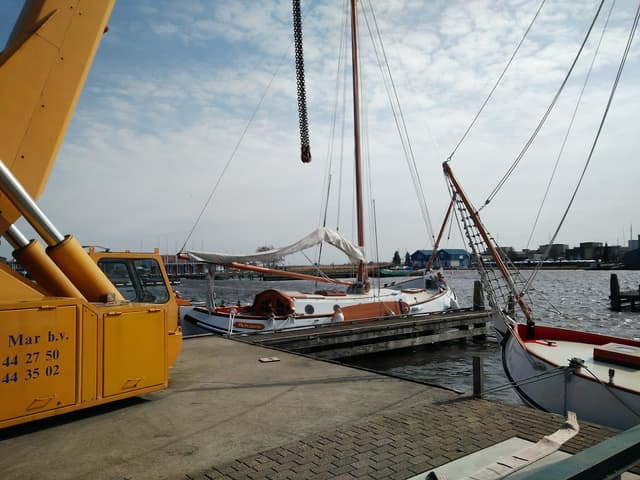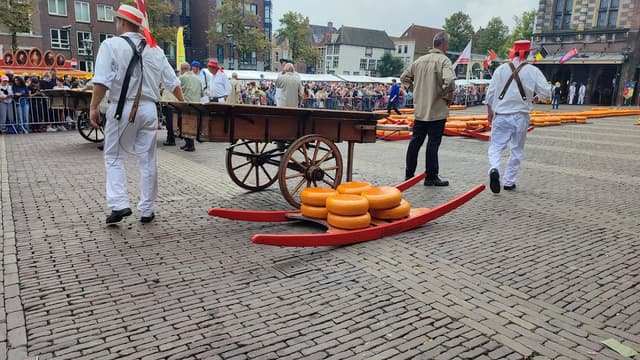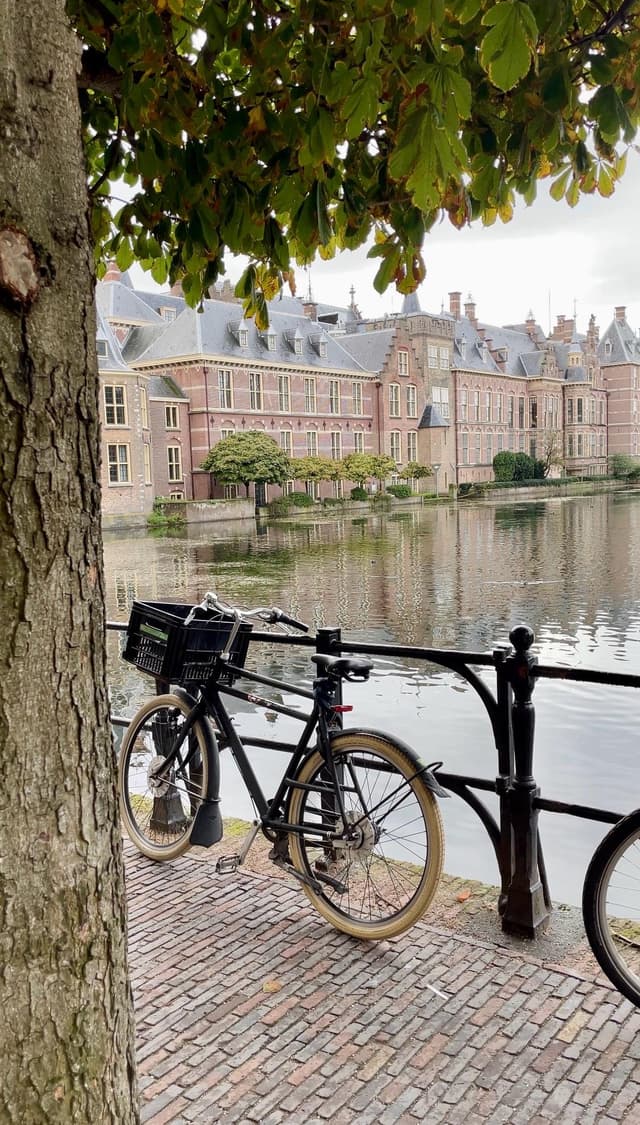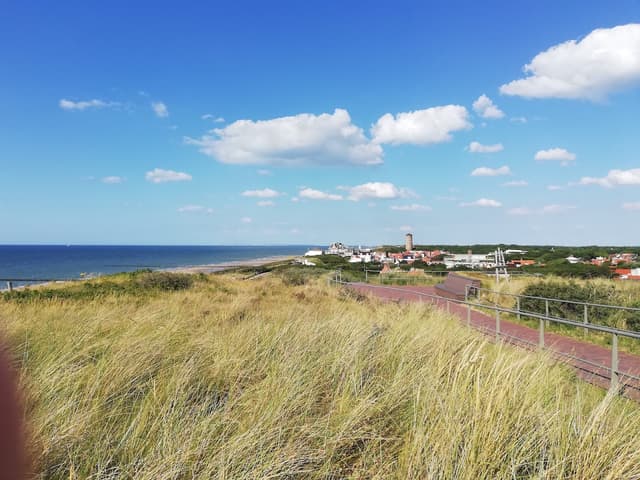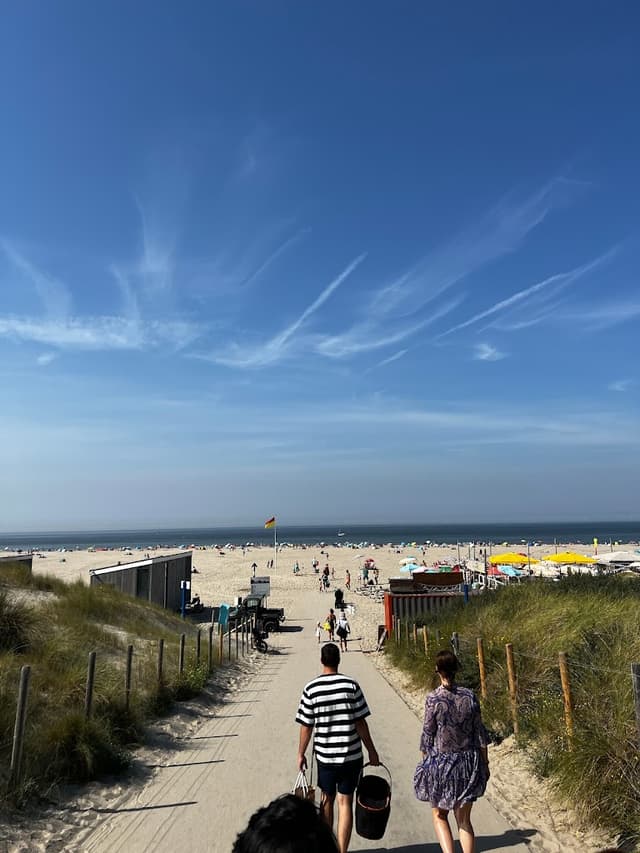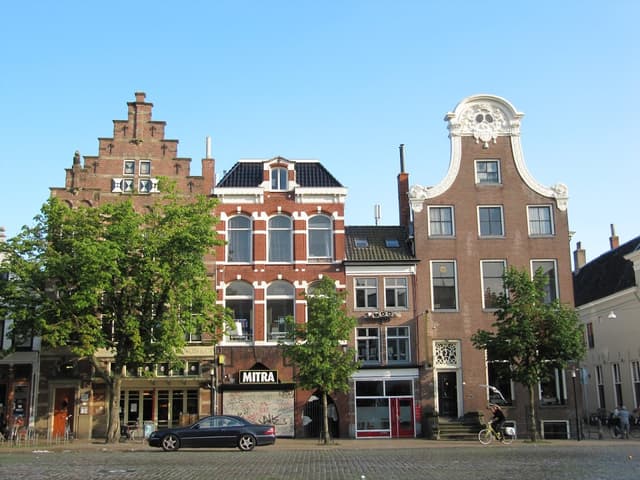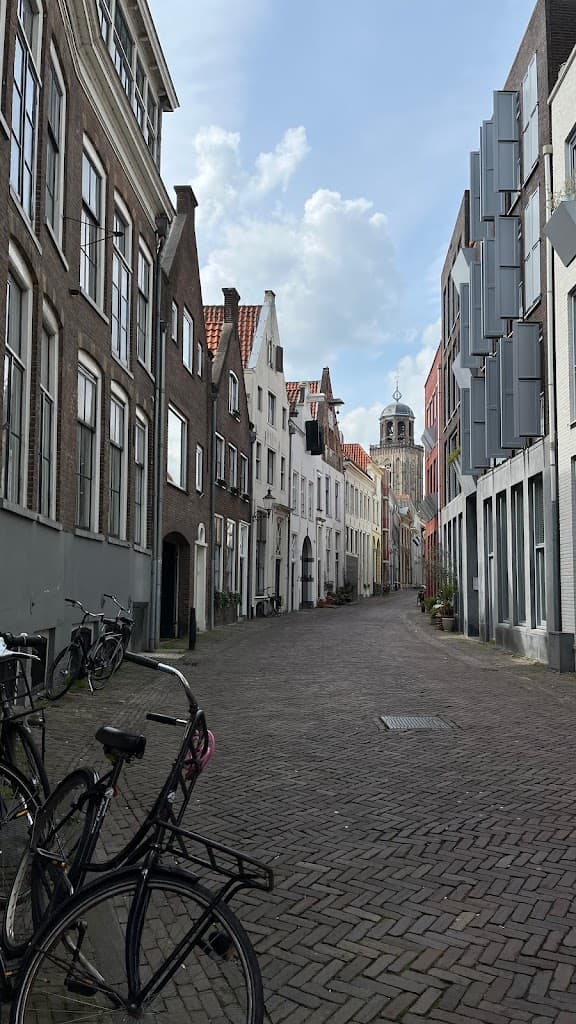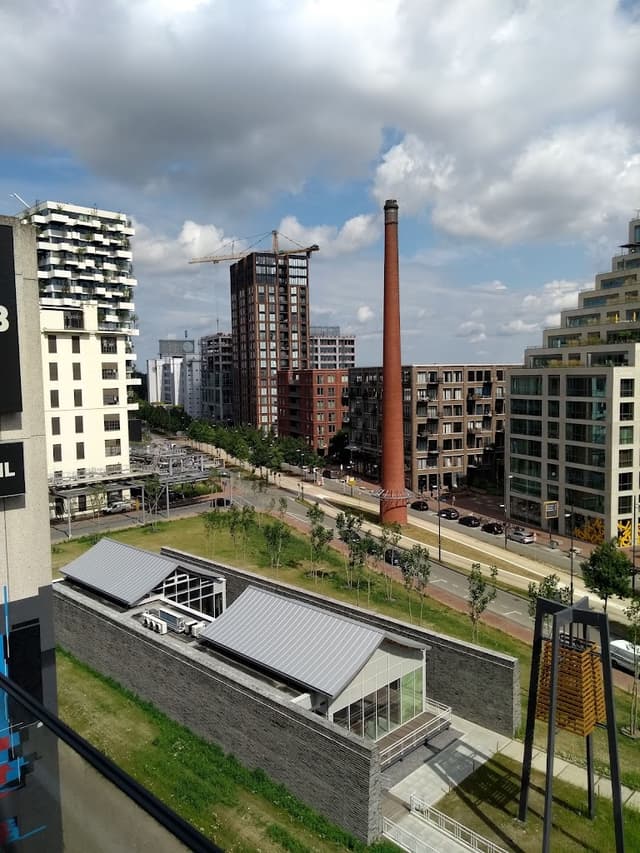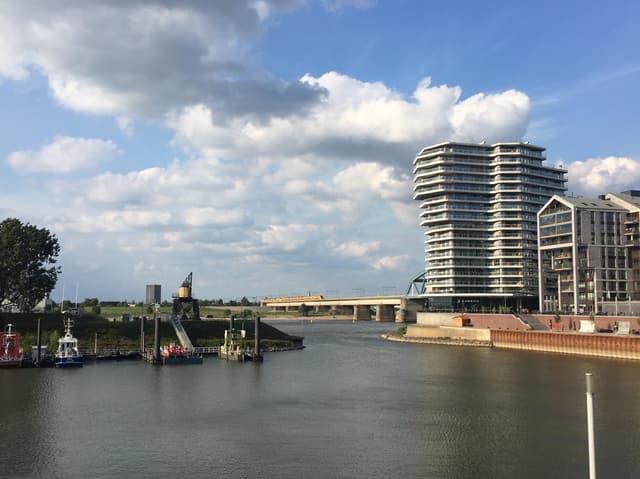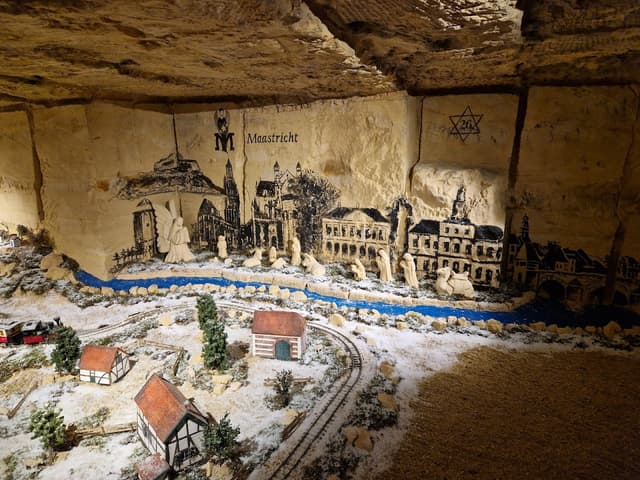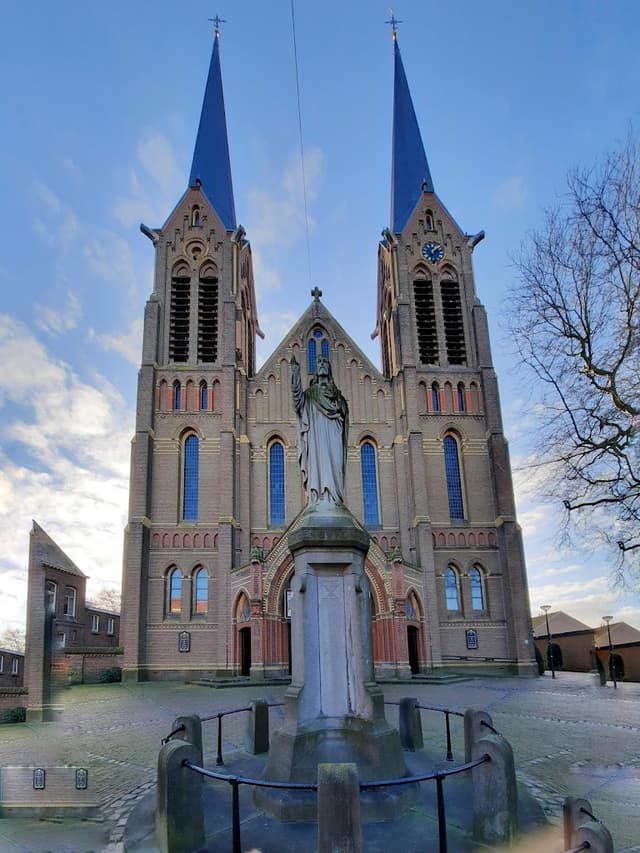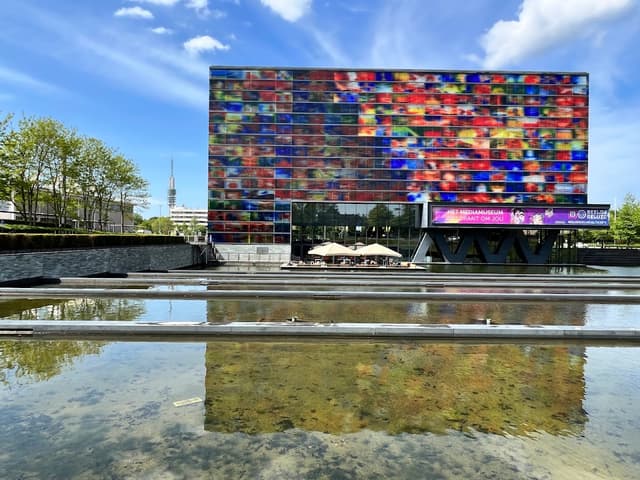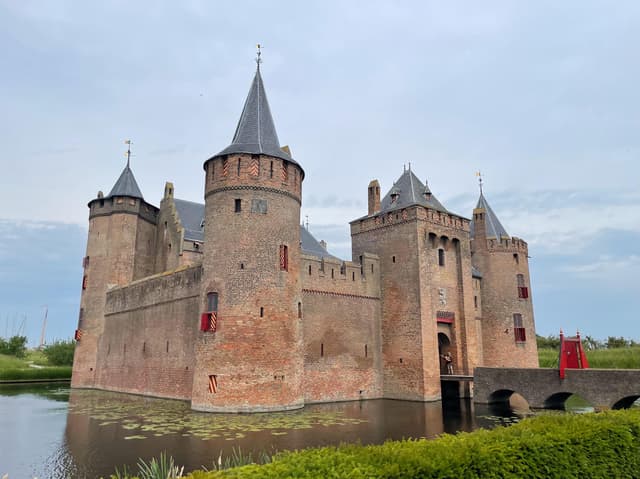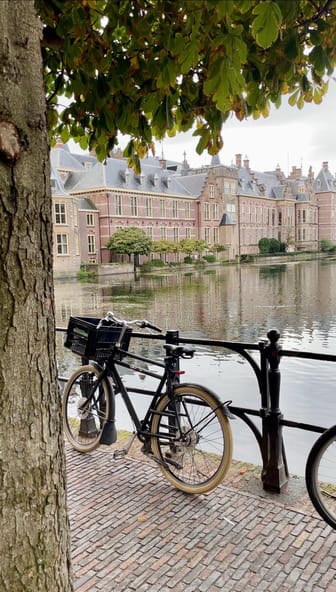Introduction
The downsides of Amsterdam
It's on many people's bucket list to visit Amsterdam and I don't mean to entirely discourage you. But there are some clear downsides to heading to The Netherlands' capital. I would say: go Amsterdam if you want to see... other tourists. I personally think Amsterdam presents a very poor reflection of Dutch culture. Many staff in shops around the city centre aren't even able to speak Dutch, which is a real shame. Language is a huge part of our culture that I believe we should try to preserve. Next to that, there is an enormous housing problem in Amsterdam, which is only made worse by tourist shops and AirBnB rentals.
The city of Amsterdam has therefore started actively campaigning for tourists to 'Stay Away' (especially targeting men who want to have a party weekend). The target is to decrease the number of tourists by up to 50%. In other words: you're not really welcome...
The alternatives
So if you think you want to visit Amsterdam, what is it you really want to see? Is it the canals? Is it the museums? Or perhaps you've heard good reviews about Dutch cheese?
Whatever it is: other Dutch cities will offer all those things, without being surrounded by hoards of tourists. Of course, you can still visit Amsterdam if you really want to, but it won't give you the real experience of what The Netherlands is like.
And more!
Next to highlighting cities and towns that are better for shopping, admiring historical harbours, or eating Dutch cheese, there are also things to do elsewhere in The Netherlands that you won't find in Amsterdam. Examples include areas suitable for hiking, and cities with mostly modern architecture.
In short, let yourself be inspired to explore more of The Netherlands than just its capital, famous as it may be.
Where to find the cutest canals?
It's interesting to me that Amsterdam is known for its canals, because quite a lot of Dutch cities/towns have them. Every historical city has been built around a main church or cathedral surrounded by waterways for trade and transportation of goods. Some of the famous canals in Amsterdam are a lot wider and nowadays full of (house)boats, with cars passing by nearby. In constast, canals in the cities below are much smaller and quieter, as they are located in pedestrian-only areas. There is also more greenery around some of the canals in Delft and Utrecht, which I think improves the overall atmosphere.
Delft
@thesustainabletravelguide
In my opinion, Delft is the prettiest town in The Netherlands! The buildings in the city centre are old, but their beauty is timeless.
Especially in summer, when the trees lining the canals are in full bloom, walking around Delft is like being in a fairytale. To give you a different but equally good perspective, I'd highly recommend going on a boat tour through the canals.
Aside from wandering through the adorable streets, Delft is home to interesting museums such as 'Prinsenhof', 'Vermeer Centrum' and 'Royal Delft'. The latter is focused around the famous blue-white Delft porselain (of which you'd only find touristy replicas in Amsterdam shops).

Details
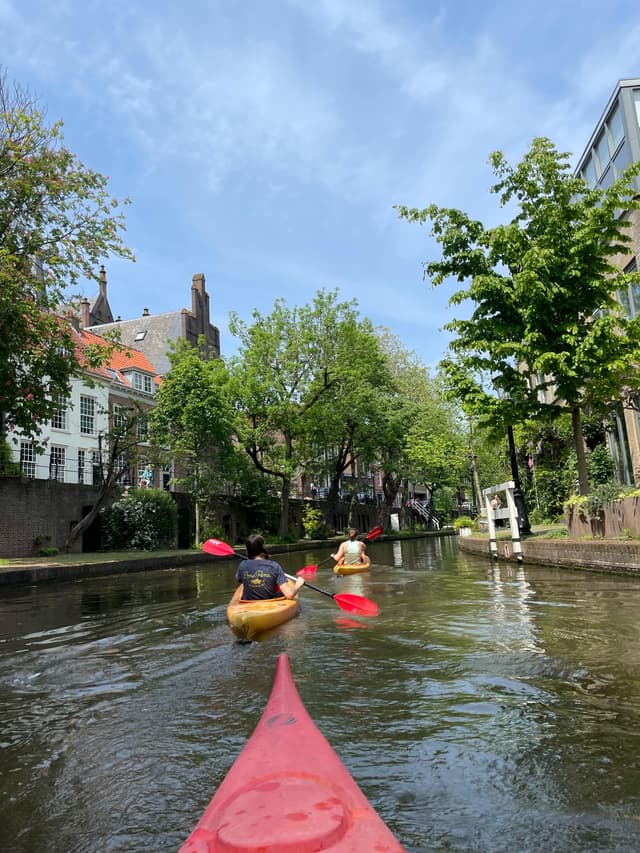
Utrecht
@thesustainabletravelguide
Another insanely pretty canal city is Utrecht. I've lived there for a year and absolutely loved it. The bustling city is full of things to do, yet the city centre has the look and feel of a small town.
What is extra good about the canals in Utrecht is that have a plateau at water level (called a "werf" in Dutch). This means you can have food or a drink directly next to the water. If you're more of a sporty type, I'd suggest renting a kayak and exploring the canals from the water surface.
When in Utrecht, don't miss out on the 'Spoorwegmuseum', a museum about the history of train travel in The Netherlands. For kids, visiting the interactive 'Nijntje Museum' is an absolute must. Nijntje (Miffy) is a famous character and plushie loved by multiple generations of Dutch children. Make sure to reserve tickets online, as no tickets are sold at the entrance.
Utrecht is also a great place for shopping. Along the southern part of the main canal, 'de Oudegracht', and its side streets, you'll find many boutique shops and restaurants. If you prefer big brands, head over to the mall next to the train station called 'Hoog Catherijne'. However, I would always to advice to shop at local stores/small businesses.

Details
Amersfoort
@thesustainabletravelguide
Amersfoort is a small city close to Utrecht. The main highlight here is the gate (which looks more like a castle) over one of the canals. Another gate with a tower can be found on the opposite side of the city centre. In general, if you enjoy admiring historic houses and cute little streets, you'll want to stroll around the 'Muurhuizen' street.
Besides the canals and parts of a defensive city wall, Amersfoort is home to serveral buildings designed by a renown Dutch architect Gerrit Rietveld. For example, the 'Rietveld Paviljoen' is now a moden art gallery. Similarly, there is a museum dedicated to abstract painter Piet Mondriaan. Funnily enough, both Rietveld and Mondriaan where fan of using mainly primary colours (blue, red, yellow).

Details
What about the iconic canal houses?
When searching online for photos of Amsterdam, you will immeadiately notice the gorgeous houses. In several cities throughout The Netherlands, you'll find similar houses (although they orginally weren't used as homes). I have to admit that you will not find the exact same style elsewhere in the country, but that doesn't mean the buildings in for example Middelburg and Leeuwarden are any less impressive!
Middelburg
@thesustainabletravelguide
Another one of my favourite cities in The Netherlands is Middelburg, although I may be a bit biased after living there for 3 years. Middelburg, like Amsterdam, was a major trading city in the Dutch 'Golden Age'. It nearly became The Netherlands' capital instead of Amsterdam! Therefore it's no surprise that you can find equally stunning canal houses in Middelburg.
The canal houses were originally used for storage of goods that came from the harbour or elsewhere to be traded. Both Amsterdam and Middelburg thrived on the exploitation of Dutch colonies and played a major part in slave trade.
If you want to learn more about the history of the province of Zeeland (where Middelburg is located), head over to the 'Zeeuws Museum'. Otherwise you can simply fill your day with walking around the charming streets and alleyways throughout the city centre. Don't forget to spot the 'Kuiperspoort', as you'll easily walk past it without noticing.

Details
Leeuwarden
@thesustainabletravelguide
Located all the way at the other end of the country compared to Middelburg, you'll find beautiful Leeuwarden. Leeuwarden has a few magnificent buildings, including the city hall, an old prison and the 'Waag'. The staple, tall Dutch houses can be found along several of the canals.
What's also fun is that you can find miniature people hidden all around the city. For just a few euros, you can buy a map which will bring you past all of the miniatures. A perfect activity for kids, but also for adults!
For museum lovers, Leeuwarden is a good place, too. The museum about Eise Eisinga (yes, that was a real person's name) is still on my own list of places to visit as well. And did you know that Leeuwarden serves as both the start and finish for the famous ice skating race called the “Elfstedentocht”
(Eleven Cities Tour)? Learn more about this at the 'Fries Museum'.

Details
The best (historical) harbours
Being focused around water, The Netherlands is full of harbours. A few good ones can be found in the places listed below. Idyllic harbours are often located in towns with a so-called "vesting" (a type of fortrification). It was hard to pick only a few of the many harbours throughout the country, so consider this list a mere starting point to getting to know Dutch naval history.
Hellevoetsluis & Brielle
@thesustainabletravelguide
I'd never thought that I would recommend people to go to Hellevoetsluis (I grew up there), but I must admit it is home to a very special harbour. The "droogdok" (dry dock) here is quite unique: ships can be hauled into an enclosed area for repairs. After closing the locke, the water is drained so the ship appears to be on dry land. As Hellevoetsluis used to be an important marine base, it only made sense to equip it with a next level 'boat garage' for repairs.
Brielle is not too far from Hellevoetsluis and also has a rich history. Brielle played a pivotal role in the independence of The Netherlands in the 16th century, after it was occupied by Spain. Brielle is a really cute town that still celebrates its victory over the Spanish every year on the 1st of April.

Details
Veere & Zierikzee
@thesustainabletravelguide
If you love Middelburg, you'll enjoy the smaller towns of Veere and Ziekzee, too. Both have a pittoresque harbour and a town centre full of historic buildings.
In Veere, it's worth booking a walking tour to learn about the history of the streets and buildings. You can also visit museums and fortifications. If the weather is good, you might even want to opt for a boat tour around the 'Veerse Meer'.
Zierikzee is at least equally interesting with over 500 monumental buildings. There are also many bars located around the harbour, so you can marvel about how architects in the 17th century had a much better taste than nowadays.

Details
Maassluis & Schiedam
@thesustainabletravelguide
Maassluis is a tiny town which isn't much more than a harbour, really. But what a cute harbour it is! If you're interested, there is a museum on towage which tells you all about Maassluis and its towing boats since the 19th century.
Travelling some 15 minutes by metro will bring you to the bigger town of Schiedam, which is known for its distilleries. It has both a historic harbour and a much more modern harbour to accommodate industrial ships.

Details
Heeg & Sneek
@thesustainabletravelguide
The northern province of Friesland is all about sailing. As there is good access to canals and lakes, Heeg and Sneek are much loved destinations for water sports.
To be fair, Heeg is a village where there's not much else to do besides hopping on a boat. Sneek, on the other hand, is a larger town with museums (about boats) and bars. It's said you cannot go to Sneek without also paying a visit to 'Weduwe Joustra' for a drink. Adults only!

Details
Where to go if you love cheese?
Crazy as it may sound, I really don't like the taste and texture of cheese (nor the animal abuse that's necessary to produce it), but appearantly Dutch cheese is internationally regarded as being of good quality. Despite not being a fan 'Gouda cheese' myself, I do know which places have the greatest cheese markets. Perhaps unsurprisingly, Gouda is one of them.
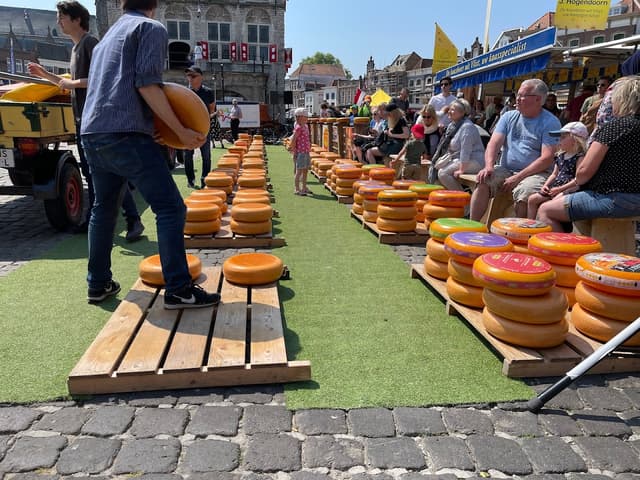
Gouda
@thesustainabletravelguide
The market square in Gouda is full of big, yellow wheels of cheese on Thursday mornings between April and August. Although the trading in cheese used to be a genuine activity, it is now a show for tourists. If you can stand the smell, it's quite the spectacle to watch. Of course, you can also get a tour through the process of making cheese. There are several places dedicated to "the cheese experience" in Gouda.
If you're looking for a more animal friendly cheese, the major Dutch supermarket chains sell several vegan cheeses. Otherwise, there are online shops that offer an even greater selection of vegan cheeses, ranging from blue cheese, to cumin cheese, to indeed, Gouda cheese. It all exists; the future of cheese is already here! Admittedly, if you want to visit a fully vegan cheese shop, you will need to head to Amsterdam.
Of course there is more to do in Gouda than just watching a cheese market. You can visit the Gouda Museum, the Sint-Janskerk, and the historic harbour.

Details
Alkmaar
@thesustainabletravelguide
A similar cheese show to the one in Gouda can be witnessed in Alkmaar on Friday mornings between March and September. In July and August, there are even extra cheese markets hosted in the evenings. Information about the history of the cheese market is available in several languages.
Alkmaar also has other attractions such as a beer museum, classic windmills, and a clogs shop. The centre of town is of course adorned with some pretty, historic buildings, much like any other Dutch city.
Again, if you want to opt for cheese that does not involve harming innocent animals, Zaandam isn't the place to go. A lot can be said about Amsterdam, but it's proudly home to several vegan cheese shops that are worth visiting.

Details
Homes of famous Dutch painters
With Amsterdam being the capital of The Netherlands, it already attracted artists many centuries ago. However, it's far from the only place where art thrived. 'De Haagse School' for instance, refers to a group of artists working and residing in Den Haag during the late 19th century. Similarly, one of the 'Old Dutch Masters' Frans Hals spent his working life in Haarlem after migrating to The Netherlands from Belgium. Both Den Haag and Haarlem are full of (art) museums. I would say either city is worth a visit if you're into Renaissance and Golden Age paintings and/or history.
Den Haag
@thesustainabletravelguide
Den Haag is a city with a rich history that houses the Dutch government. As the city of politics, international justice, and human rights, it's full of interesting things to do.
In terms of art, both modern art and classical art lovers will find enough to see. The Mauritshuis is home to some absolute masterpieces by famous Dutch painters like Rembrandt, Vermeer, Frans Hals and Jan Steen. On the other side of the Hofvijver, you will find the Breduishuis. This is a smaller museum with somewhat lesser known paintings, but still worth a visit if you want to admire 17th century Dutch paintings.
If you're considering to spend some time in Den Haag, do check out my full guide below! It contains more than 75 places to sleep, eat and see, with a focus on sustainability. And if you use the code NOTAMSTERDAM, you'll get a nice 10% discount. ;)

Details
🇳🇱 Are you looking to visit Den Haag (English: The Hague) and do you care about sustainability? If so, this is the city guide you need!
🚝 Flight-free and car-free transportation to and within Den Haag
🛏️ 4 eco hotels and 2 sustainable hostels
🌿 More than 20 vegan-friendly places for food, Dutch snacks and drinks
🖼️ The best museums, churches, palaces and neighbourhoods for sightseeing
🌳 5 parks and 5 additional places to go for a run, bikeride or workout
👖 Zero waste shops and thrift stores for secondhand clothes
🤝 7 easy volunteering activities
🌱 4 daytrips from Den Haag
🇳🇱 I lived in Den Haag for more than 4 years. With over 75 tips listed, even locals are bound to discover some new spots with this guide.
🇳🇱 Den Haag is a great city to live in (and to visit!) because it has a little bit of everything: beach, forest, old town, funky gentrified areas, parks, as well as great access to many surrounding towns and cities. Be sure to mark this versatile city on your list of destinations in The Netherlands!
P.S. All of my guides are regularly updated. This means that closed-down places will be deleted and replaced by new finds.
🇳🇱 Last updated: October 2024
Haarlem
@thesustainabletravelguide
Many people who want to live in Amsterdam but cannot afford it instead try to move to Haarlem (which as a result has become quite an expensive place in terms of housing, too). I cannot blame them, as Haarlem is a bit quieter but no less beautiful.
Haarlem is one of those cities where you can spend hours just looking at buildings. Or, you can visit one of the many museums. The museum dedicated to Frans Hals and his contemporaries is by far the most popular. It possesses multiple important works in the development of Dutch art.

Details
Which beach to pick?
Of course a country that is so focused on water and preventing floods is home to a good few beaches. The Netherlands has an extensive coastline with both popular and more hidden beaches. The beaches below include places that are popular amongst locals, instead of listing the usual suspects such as Zandvoort (conveniently marketed as "Amsterdam Beach") and Scheveningen. Scheveningen looks nice, but is just too busy in summer. Overtourism is a big issue there. Zandvoort on the other hand is a place that lost its charm due to the lack of maintenance on its boulevard. In my opinion, it looks a little sad now. So on to the better stuff below!
Brouwersdam
@thesustainabletravelguide
As a kid I often went to Brouwesdam. It's basically a sandy, wide stretched dam that is a part of the "Delta works". In other words, it acts as a buffer to diminish flooding risks. If you're interested to know more about water management in The Netherlands, I can recommend 'Neeltje Jans'.
As a beach, Brouwersdam gets really busy in summer. If you want to go there and secure a good spot, you need to arrive very early in the morning to avoid queuing. My tip is to find a spot on the edge of the beach, where the ground is more stony with only a thin stretch of sand. You'll have to walk down quite some way to reach the beach, but it will be much more calm at the bottom. It's also great if you like swimming, as the sea will be closer by compared to wider parts of the Brouwersdam.

Details
Domburg & Dishoek
@thesustainabletravelguide
A bit further south are two more lovely beaches. Both are quite popular among German tourists, as Domburg is a nice town and Dishoek is relatively close to Vlissingen.
Domburg and Dishoek are full of holiday homes, as well as cafes and restaurants that mainly open in summer. The dunes are also nice to walk through if you're not someone who enjoys baking in the sun for hours.

Details
Kijkduin
@thesustainabletravelguide
As an alternative to Scheveningen, I'd recommend Kijkduin for a beach close to Den Haag. Scheveningen will be absolutely crammed on a hot day, but Kijkduin provides more space. The area is beloved for water sports and there are great cycle routes through the dunes south towards Hoek van Holland. The dunes are full paths for walking, too.

Details
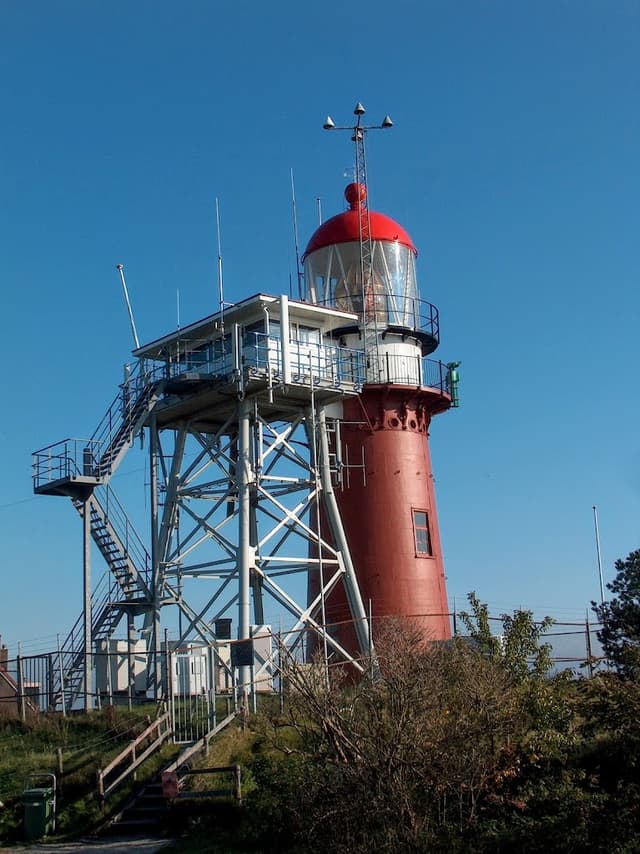
Vlieland
@thesustainabletravelguide
The Netherlands has five islands which can be visited by tourists. Three smaller ones are uninhabited nature areas that you're only allowed to enter with special permission. Of the five touristy islands, Vlieland is my favourite. Visitors are not allowed to bring their car, so there's little traffic on the island, which adds to the relaxed vibe.
The beach on the side of the North Sea is very large and houses several restaurants. The restaurants ("strandtenten") are ideal if you prefer a cold drink with a good view and without too much sand in your shoes.
Vlieland, as well as the other islands, is a great place for a short holiday. There are many opportunities for walking, cycling and getting some well-deserved rest. Concerning the other islands, Texel is the biggest. There, you can explore several villages. It doesn't look very different from the mainland. Terschelling is slightly more of a party-island in summer. Ameland is mostly known for the cleanliness of its beaches, and Schiermonnikoog has the widest beach (up to one kilometre) in Europe. Schiermonnikoog also has a surprisingly high biodiversity for such a small island. In general, all of the islands are perfectly suited for winding down and soaking in nature.

Details
Ideal places for a shopping spree
Want to go shopping but tired of the endless tourist shops? You might enjoy one of the cities listed below as your destination. All three have lovely city centres, with many shops located in historic buildings. Of course, there's a lot more to do than just shopping, so they're worth reading about even if you prefer to stay out of shops. And of course, try to support small business owners by buying local products instead of going for the big brands as a default.
Groningen
@thesustainabletravelguide
Groningen is the biggest city in the northern part of The Netherlands. About 25% of its inhabitants are students, so there's always a lot going on. Groningen is a vibrant city that is not only good for shopping, but also for culture. The 'Forum' is a well-known centre for film, literature, expositions, and more.
A bit further away from the city centre, you'll find lovely parks. Groningen even has a small "city beach". Because Groningen is quite isolated from other larger Dutch cities, it has an interesting history as part of a German trade network and as an independent city-state. 'Museum aan de A' will undoubtedly tell you all you want to know about this fascinating city.

Details
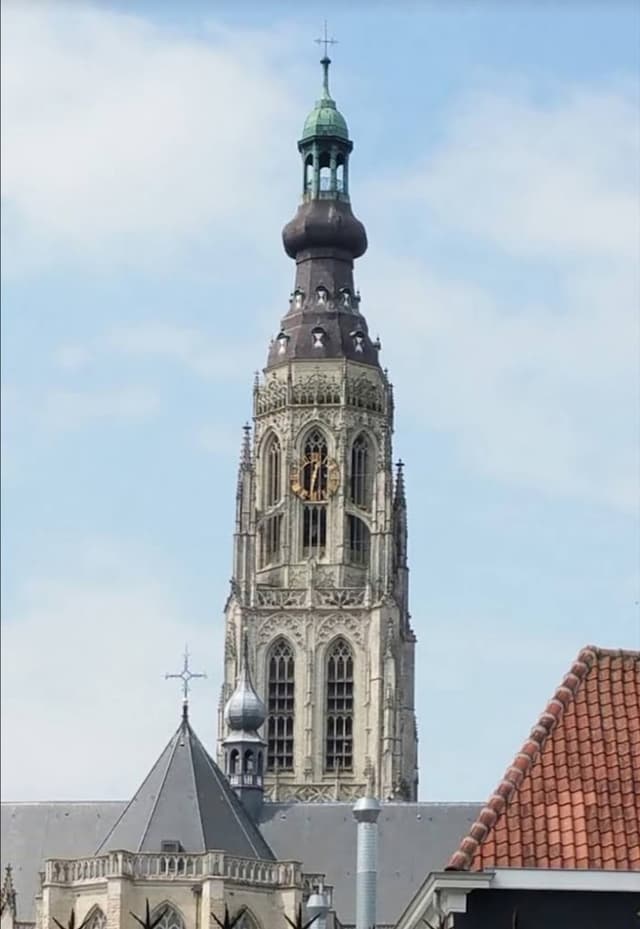
Breda
@thesustainabletravelguide
A city full of specialty shops, that is how the website of the province of Noord-Brabant describes Breda. A fitting description, as my grandparents make a yearly trip to Breda especially for bonbons (filled chocolates) from 'La Bohème'.
In general, Breda is a good place for food and drinks due to the numerous cafes and restaurants in its city centre. It has a few staple foods such as "Nassaubollen" and "Ginnekoek". In terms of shopping, much of it is also centred around edibles. Mustard from Breda is supposedly one of the finest. And of course, there are several local beer breweries. Did you know there is a bar which doubles as a museum for beer advertisements? It doesn't get much funkier than that!
Even though much of the cuisine in Breda is focused around meat, cheese and beer, you will not be disappointed as a vegetarian or vegan either. You can get a veggie version of the province's iconic sausages. Next to that, there are several fully vegan coffee and lunch spots. And 'Plan B' is where I'd advice you to go to for plant-based tapas.

Details
Deventer
@thesustainabletravelguide
Deventer is another characteristic city, albeit a lot smaller than Groningen and Breda. Still, it has a few very nice sustainable gift shops such as 'Jeppe'. Other stores are focused on antiques and traditional crafts, such as the making of brushes. For those who prefer more modern themes, 'Flotte' is a scandinavian design stores. In short, there's something for everybody!
Aside from shops, Deventer hosts the oldest library in the country. And for those who want to get outside, there are several playing areas for kids, and a veggie farm with a path that you may only enter barefoot ("blotenvoetenpad").

Details
Where to go for museums and churches?
I've already mentioned a lot of museum options in other cities, but there are a few cities that I think outperform the others. In general I suppose The Netherlands is a museum-dense nation. Amsterdam is filled to the brim with all kinds of museums, but so is Leiden! Moreover, Leiden, Den Bosch and Maastricht all have a couple of museum-worthy churches.

Leiden
@thesustainabletravelguide
Amsterdam may have a ton of museums, but if you'll believe me, The Netherlands' best museums are located in Leiden. Perhaps it's due to Leiden also being home to the oldest university in the country, but the city is truly bustling with knowledge to be shared.
There is the 'National Museum of Antiquities', 'Naturalis', 'Corpus', 'Japanmuseum Sieboldhuis', 'World Museum', etc. etc. There is simply too much choice! Leiden's botanical gardens are (in my humble opinion) also the very best you'll find in The Netherlands. The greenhouses are gorgeous, filled with an enormous amount of different species. Outside, there is a lot of information on biodiversity and the evolution of fauna. In summer, you'll also be greeted by blooming flowers.
And have I mentioned that Leiden's city centre is full of canals? Really the only negative thing to be said about this astonishing place is the lack of greenery. Leiden is one of the "stoniest" cities in the country.
Now on to the churches: the 'Pieterskerk' is the biggest, most impressive one. But as you can see from the top of the 'Burcht', there are many more. Depending on your interests, it's well worth visiting a few to admire the architecture and decoration.

Details
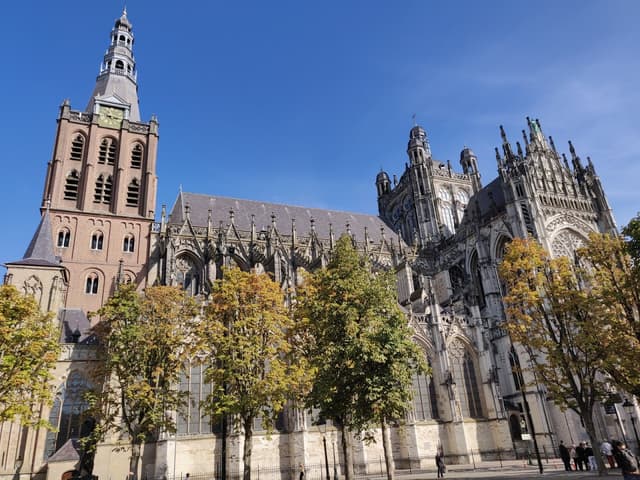
Den Bosch
@thesustainabletravelguide
The most important landmark of Den Bosch is the 'St. John's Cathedral' (John is merely the translation of the Dutch "Jan"). Make sure to secure a guided tour to the top of the cathedral for the best view. If you can't get enough of the catholic grandeur (most of The Netherlands is protestant, but not Den Bosch!), there's also an impressive basilica in a village just south of Den Bosch.
In the city itself, you cannot fail to notice its rich history. For example, the oldest brick house in the country can be found in Den Bosch. To learn more, head to the 'Museumkwartier'.
For a cultural or culinary experience, have a look at what's on at the modernised 'Tramkade'. To fully immerse yourself in Den Bosch culture, you'll have to visit the funny 'Oeteldonks Gemintemuzejum'. It deals with everything related to the yearly carnaval tradition that is celebrated in the southern provinces of The Netherlands. And if the canals are really your thing, try one of the boat tours around the city centre.

Details
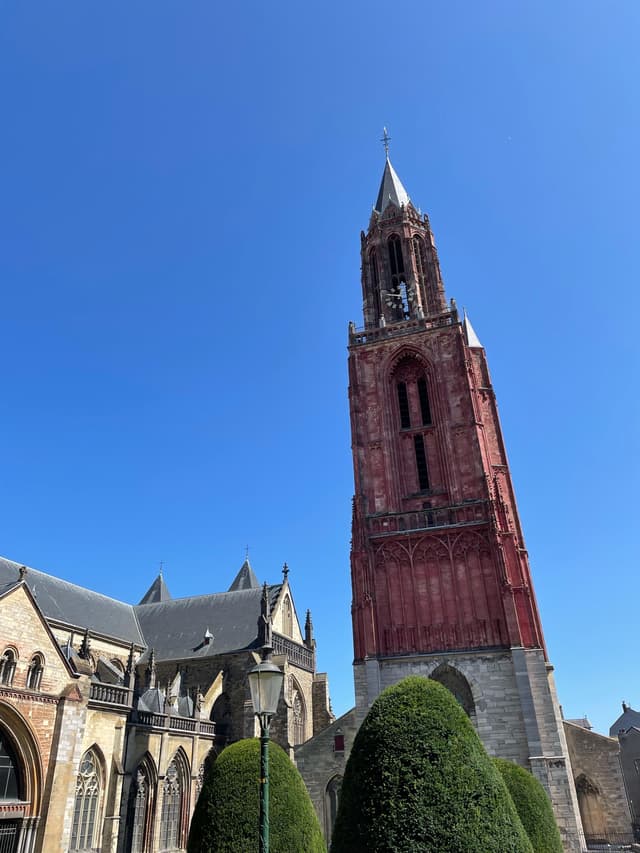
Maastricht
@thesustainabletravelguide
Maastricht is a lovely city full of history and beautiful buildings. The city dates back to the Roman era when the first bridge across the river Maas was built. The 'Maastricht Museum' is worth a visit for anyone who loves history.
Other fascinating museums include one about the natural history of the region, the 'Museum of Illusions', and a 'Fotomuseum'. Although not technically a museum, you can also tour the casemates, which are defensive underground tunnels.
In terms of churches, you'll want to head over to the main square called 'Vrijthof'. Over there, you'll find an impressive red church tower, a basilica filled with majestic-looking artefacts, and a chapel. You can climb up the iconic red tower of the 'St. Jan's Kerk' for a panaroma view of the city. I'd advice you to check the calendar of the church, as it closes for private events quite regularly, especially in summer.
Aside from everything there is too within the city, Maastricht is the gateway to many hilly cycling and hiking routes. This way, you can combine an active holiday with a citytrip. If you're still unconvinced that Maastricht is a must-visit destination, I recommend sneaking a look at its famous bookshop 'Dominicanen'. Perhaps that could be the last push you need to realise how much this old Dutch city has to offer!

Details
What about modern art and design?
Rotterdam was heavily bombed in the Second World War. Instead of trying to restore its old buildings (as was done in for example Middelburg), Rotterdam took a turn in the other direction. It's not without reason that The Netherland's second largest city has become world famous for its architecture. Eindhoven, the country's fifth largest city, also has a reputation for being future-oriented. It's the self-proclaimed city of tech, innovation and design. This is in part due to its history, but gentrification is doing its part, too.
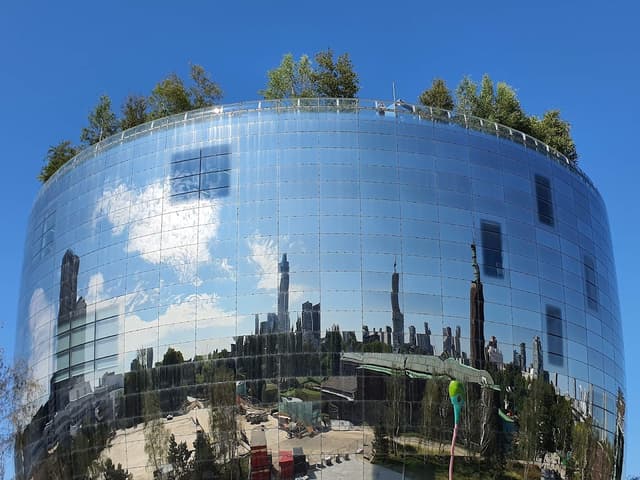
Rotterdam
@thesustainabletravelguide
A station that looks like an upside-down tinfoil bowl (like the ones in which traditional Rotterdam junkfood "kapsalon" is served), streets filled with street art, a giant shiny modern art depot, and a harbour notorious for shipping cocaine into Europe -- Rotterdam has got it all! Jokes aside, Rotterdam really does have a lot to offer for tourists.
The city is full of museums and funky places. Check out the street art around the 'Witte de Withstraat'. Closeby you can visit the 'Witte de With Centre for Contemporary Art'. But of course, the modern art highlight is the 'Boijmans van Beuningen' museum and its accompanying art depot, as well the surrounding "museumpark".
Next to that, Rotterdam is good for vegan food, and has a vibrant music arthouse film scene. And did I mention the architecture? People come to Rotterdam from all over the world to see the 'Erasmusbrug' with their own eyes. Personally, I'd rather look at the city hall -- but to each their own! ;)
In any case, Rotterdam is a large city that provides things of interest for virtually anyone. You definitely won't get bored here! And even if you do, there are great train connections with many other Dutch cities.

Details
Eindhoven
@thesustainabletravelguide
Eindhoven prides itself in being the design-capital of The Netherlands. It hosts the annual Dutch Design Week every October and is home to a university focused on solving the world's challenges through tech. Especially the neighbourhoods Strijp-S, Sectie-C, NRE-terrein and Kanaalzone are full of small-scale shops, ateliers, street art, and start-ups.
Eindhoven used to be quite an industrial city as it was the founding place of Philips. Since much of the production has been outsourced over the past decades, many empty factory spaces have been converted in to maker-spaces, galleries, and more. As a growing city, Eindhoven is also welcoming lots of modern architecture with smart housing solutions (such as multi-purpose spaces, utility sharing, and adaptable designs).
In short, Eindhoven is the place to be if you're interested in innovation but at the same time value supporting small-scale businesses and sustainability.

Details
What are the best places for hiking & cycling?
The Netherlands is famous for its top-notch cycling infrastructure. At the same time, most of the country is very flat, which doesn't lend itself well for hiking. There are, however, a few great places that combine hills and cycling routes. Tourists may often overlook the southern and eastern parts of the Netherlands, so I'm here to show you they're great regions for the more active, outdoors type of traveller!
Arnhem
@thesustainabletravelguide
I would describe Arnhem as a very neat, well-maintained city. The first time I cycled through it, I was amazed by how scenic it looked. When you arrive by train, you also get a first good impression because of the recently renovated station.
The reason Arnhem is a great place to stay is because it's super close to two (of the few) national parks in The Netherlands. Both the 'Hoge Veluwe' and the 'Veluwezoom' are within cycling distance of the city centre. These nature areas can be crossed on foot or on a bike that can handle a bit of gravel.
Within the city of Arnhem itself, there are also a few large parks. And there is some nice cultural stuff going on as well, including several museums and foodhall.

Details
Nijmegen
@thesustainabletravelguide
Another city surrounded by a good amount of greenery is Nijmegen. You might have heard this city's name before, as it is known for the 4-day walking event that takes place there every year. I get why they picked Nijmegen, because the area is beautiful!
Nijmegen is a decent-sized city that has a big park and a small riverside beach. But really, the reason you want to go is for the hills closeby. There are good routes for road cycling, but the mountainbike trails are even better! Hikers will also find enough options. And don't be surprised if you suddenly find yourself in Germany, as Nijmegen lies pretty much on the border.

Details
Valkenburg
@thesustainabletravelguide
If you prefer walking in hills instead of over them, you might fancy yourself a trip to Valkenburg. Many Dutch people will go here at least once in their life to wander through the caves. Especially in winter, Valkenburg is a hugely popular spot. Between November and January, the most accessible caves will be filled with lights and Christmas stalls.
Of course, the hiking and cycling options remain good all year round. You might find the area to look very non-Dutch due to the amount to (sometimes quite steep) elevation. Especially south of Valkenburg is good if you want to be above sea level! Do be aware that the hills come with a flooding risk in the wet seasons. Mountain water from southern Germany has caused big problems in the province of Limburg before. But don't let that stop you from admiring the charm of an area that couldn't be more different from Amsterdam!

Details
Kaatsheuvel
@thesustainabletravelguide
Most people go to Kaatsheuvel solely for the 'Eftelingen' amusement park (great for young kids, would definitely recommend it). But did you know it's close to a rather special national park, as well? The 'Loonse en Drunense Duinen' consists of a large area of dunes -- without any sea nearby. To keep it from converting into a forest, the area is actively maintained and excess saplings are removed.
The 'Loonse en Drunense Duinen' are perfect for walking, and there are a few mountainbike trails around it. The sand can make the walking quite a challenge, so it makes up for the very mild elevation that results from the continuous reformation of the dunes. As said, this type of ecosystem is truly unique: you will have a hard time finding a similar place in Europe. It's worth getting a tour guide who can tell you all about it!

Details
Staying close to Amsterdam
Okay, I get it, some of you still want to go to Amsterdam. If, however, you want to see just a little bit more of The Netherlands, or you're looking for cheaper accommodation outside of the capital, look no further! The three places listed below are all quite different, so pick one that suits you best.
Hilversum
@thesustainabletravelguide
Hilversum is a short train ride from Amsterdam, also within easy reach from Utrecht. Hilversum is where most tv and radio shows in The Netherlands are recorded. The so-called 'Mediapark' is therefore the main thing that drives people to visit Hilversum. There are a couple of museums about various media, but of course it's also possible to attend a recording! You can sign up to be in the audience of a show, or purchase a ticket to see a live performance. You might have to start learning some Dutch beforehand, though.
In the town centre of Hilversum, there is a fun but often really busy foodhall. Other things to do would be to visit the city museum, a church, or the council house. Better yet, there is good walking through the "hei" (heath) around Hilversum. You might stumble across an old sanatorium while you're at it!

Details
Muiden
@thesustainabletravelguide
Who doesn't love castles?! The one closest to Amsterdam is the 'Muiderslot'. The town to which the castle belongs isn't overly exciting, but there are a few nice things to do. Close to the castle are the remains of a fortress, as Muiden is another fortrified town ("vestingstad").
Much of Muiden has been built around a harbour, so you can make the most of that by hopping on a ferry to the island 'Pampus'. This man-made island as part of a defence system in the late 19th century.
But getting back to the castle: this is the best reason to go to Muiden. In summer, the gardens next to it are very pretty, too, but the castle itself is good in any season.

Details

Zaandam
@thesustainabletravelguide
Zaandam is slightly north of Amsterdam and its main tourist highlight is an eye-catching hotel. The other thing to see is a cluster of three windmills called the 'Zaanse Schans'. It's a popular part of multi-stop daytrips from Amsterdam, so don't expect to be entertained there for hours. From Zaandam train station, you probably want to cycle or catch a bus to go see the windmills.
The tiny town centre of Zaandam has not got loads going for it. There is a mix of cute old houses and modern buildings housing big brand shops. There are a few small museums. One of them focuses on the French painter Monet; another is the house of late Tsar Peter, who resided in Zaandam for a week and visited a few more times after that. Hence why one of Zaandam's neighbourhood is named after Russia!
All in all, Zaandam is not the most exciting of places, but it does provide a bit more of a view into Dutch culture. It's still quite tourist-focused because it's so close to Amsterdam, but you can expect meeting real Dutch people, too!

Details
So where are you going?
Some final thoughts
I hope this guide inspired you to look beyond Amsterdam and has made you excited to explore more of The Netherlands. I do have to add a disclaimer that the places featured here are skewed towards the western part of the country, because that's where I'm from and where I know most about. Obviously there are many more places worth your visit that I did not include. Zwolle, for example, is a nice city, but it didn't particularly stand out in one of the categories above.
Still, I hope to have given you an idea of what lies beyond the capital. And, again, if you still want to visit Amsterdam, definitely go! Just remember there's a lot more to The Netherlands than this one city full of tourists.
Need more tips?
If you want help planning your trip to The Netherlands, hit me up! Feel free to contact me for more tips, a full itinirary, recommendations for certain locations, etc. I'd love to think along!
Thank you!
Lastly, I just want to say thank you for reading this guide. I've put quite some time and research into compiling this list of destinations throughout my home country, so I'd really appreciate it if you could leave a review and/or share this guide with your friends & family.
* * *
